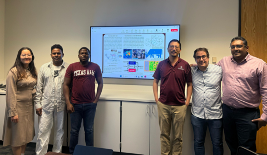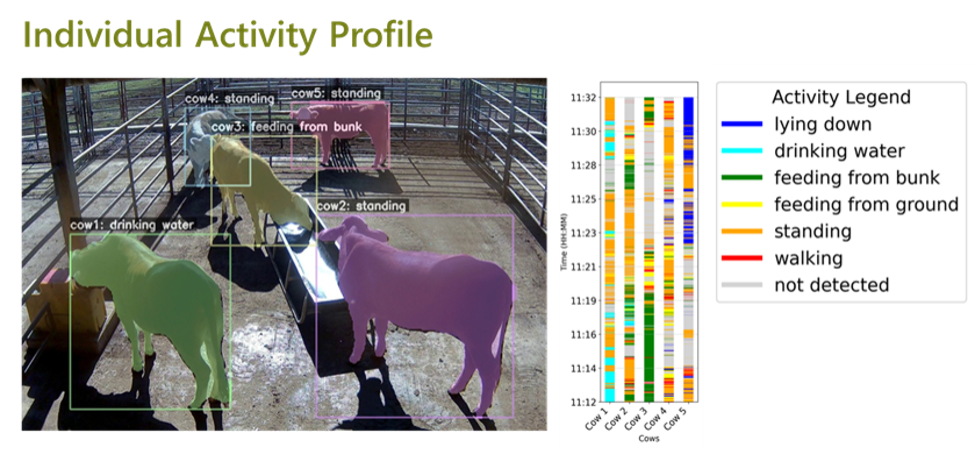
Texas A&M Institute of Data Science (TAMIDS), the Department of Animal Science, and AgriLife Research have been working to bring advanced computer vision technologies for more innovative cattle management. The Early Career collaborative award to Drs. Karun Kaniyamattam and Yalong Pi focus on developing computer vision systems that predict bovine respiratory disease earlier than possible through human-driven disease management. The project is one of the promising outcomes of the growing and successful partnership between TAMIDS and AgriLife, highlighting the impact of interdisciplinary collaboration in agricultural innovation.
At this year’s AI in Agriculture Conference at Mississippi State University, TAMIDS master’s student Uday Vysyaraju presented “Advancing Precision Livestock Management through Computer Vision Systems for Bovine Respiratory Disease Detection”. This research introduces an automated individual activity recognition system for beef cattle. By accurately identifying behaviors such as standing still, lying down, walking, feeding, and drinking, the model supports early detection of health concerns. The ability to monitor individual activity patterns enables the estimation of Depression and Appetite scores from the DART (Depression, Appetite, Respiration, and Temperature) scoring system, facilitating timely health interventions and improving cattle welfare and productivity.
Adeolu Adekunle, a Ph.D. student in Animal Science, also presented his poster titled “Artificial Intelligence-Driven Decision Tools for Antimicrobial Stewardship in Livestock Systems.” By providing real-time observations of livestock behavior in pens and establishing an efficient pipeline for delivering actionable insights to farmers, the system is expected to significantly reduce economic losses associated with BRD and broader concerns related to livestock health.

As a future direction, the team aims to build a fully automated video analysis pipeline for 24/7 monitoring of cattle behavior at the Nutrition and Physiology Center (NPC). Using continuous video recordings from Calan Gate pens, the system will train computer vision models to locate, identify, track, and analyze the activities of individual cows. The goal is to generate detailed activity profiles for each cow, enabling long-term behavioral analysis and health monitoring. Once accurate activity profiles can be reliably generated, an inference engine will be developed to support real-time, continuous monitoring and decision-making.



